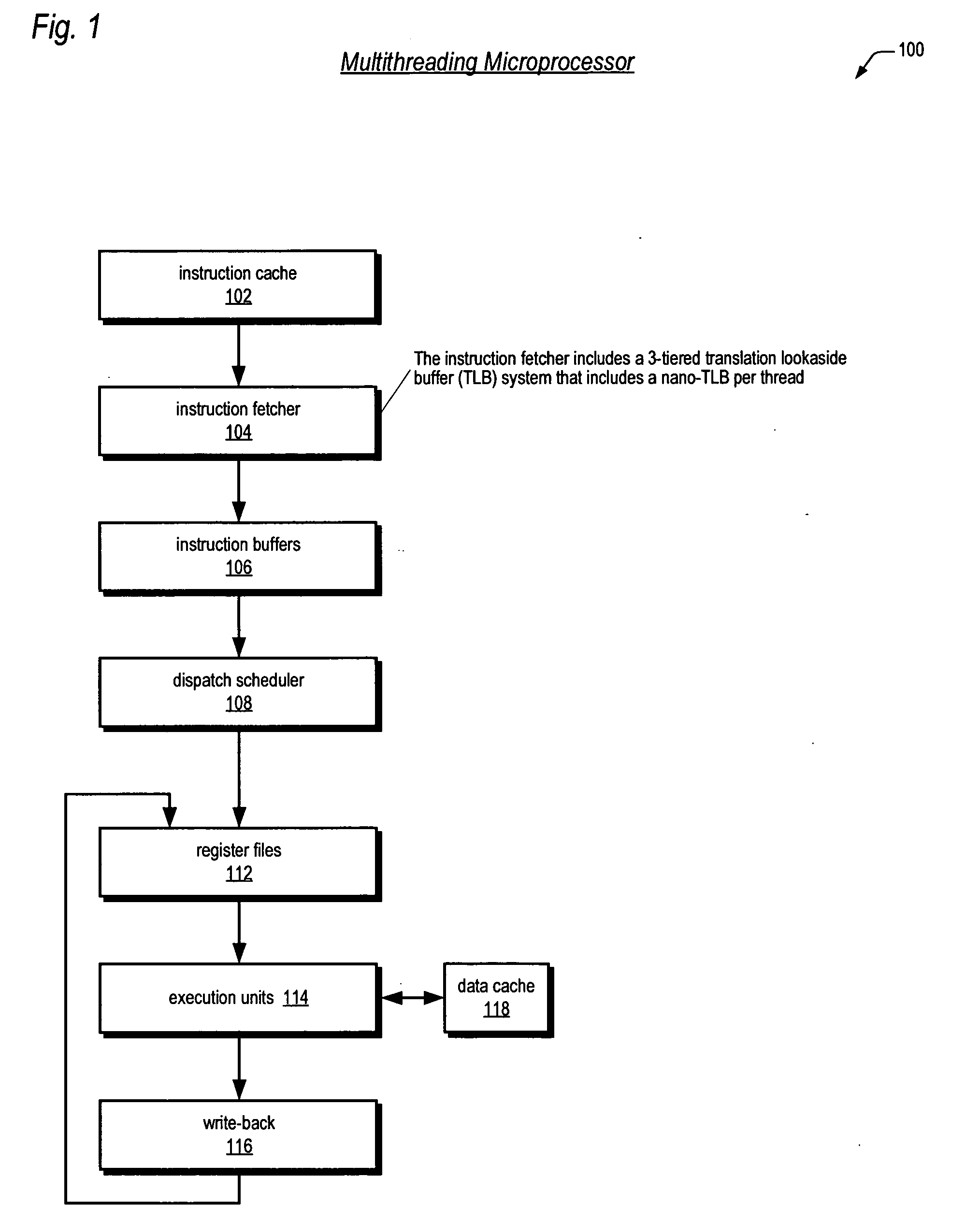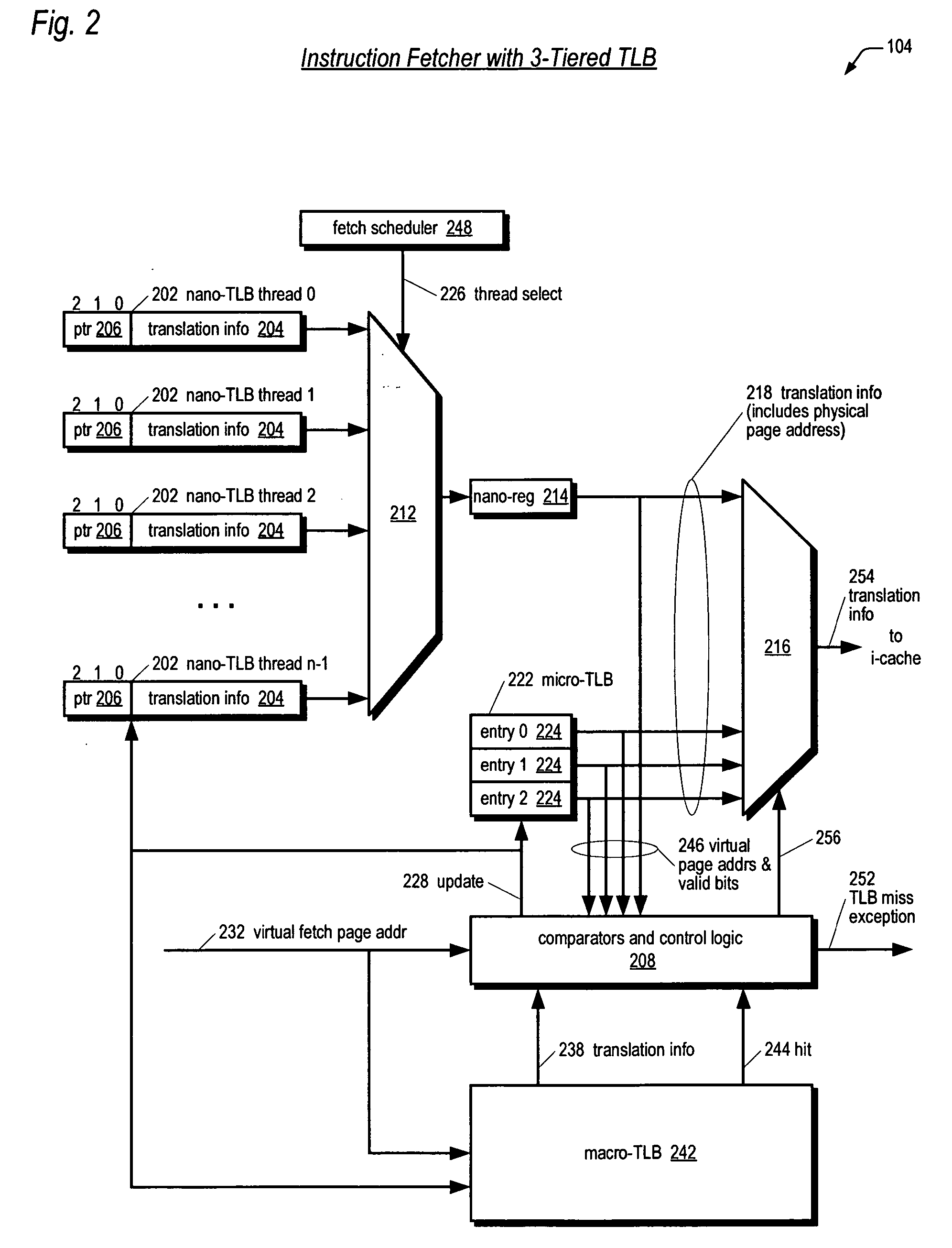Three-tiered translation lookaside buffer hierarchy in a multithreading microprocessor
a multi-threading microprocessor and buffer hierarchy technology, applied in computing, memory adressing/allocation/relocation, instruments, etc., can solve the problem of affecting the performance of the relative cost of the operation to perform a page table walk, and the difficulty of achieving the performance improvement that may be achieved through exploitation of instruction-level parallelism, etc. problem, to achieve the effect of reducing the cost of operation, the memory outside the microprocessor
- Summary
- Abstract
- Description
- Claims
- Application Information
AI Technical Summary
Benefits of technology
Problems solved by technology
Method used
Image
Examples
Embodiment Construction
[0031] Referring now to FIG. 1, a block diagram illustrating a pipelined multithreading microprocessor 100 according to the present invention is shown. The microprocessor 100 is included as part of a computing system including a physical memory logically separated into multiple pages. The system is a virtual memory system. In one embodiment, the system includes operating system software that creates the mapping between virtual memory addresses and physical memory addresses.
[0032] The microprocessor 100 is configured to concurrently execute a plurality of threads. A thread—also referred to herein as a thread of execution, or instruction stream—comprises a sequence, or stream, of program instructions. The threads may be from different programs executing on the microprocessor 100, or may be instruction streams from different parts of the same program executing on the microprocessor 100, or a combination thereof. In particular, the instructions of the threads may reside in different ph...
PUM
 Login to View More
Login to View More Abstract
Description
Claims
Application Information
 Login to View More
Login to View More - R&D
- Intellectual Property
- Life Sciences
- Materials
- Tech Scout
- Unparalleled Data Quality
- Higher Quality Content
- 60% Fewer Hallucinations
Browse by: Latest US Patents, China's latest patents, Technical Efficacy Thesaurus, Application Domain, Technology Topic, Popular Technical Reports.
© 2025 PatSnap. All rights reserved.Legal|Privacy policy|Modern Slavery Act Transparency Statement|Sitemap|About US| Contact US: help@patsnap.com



